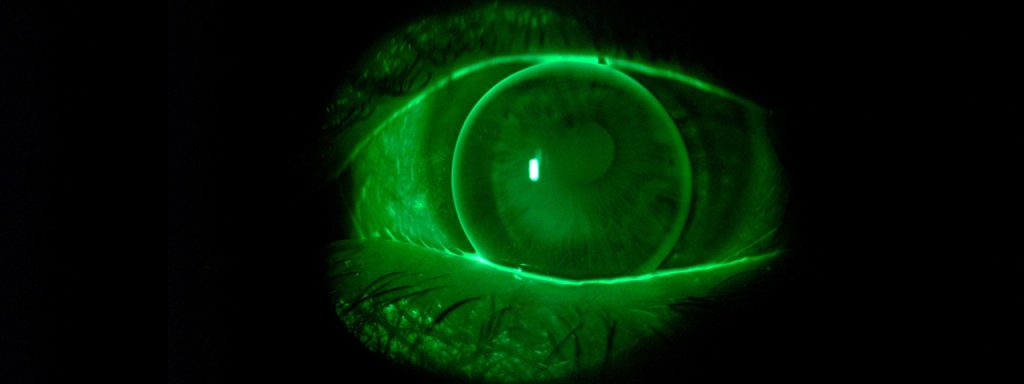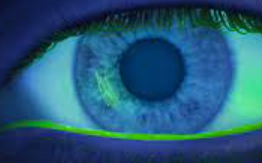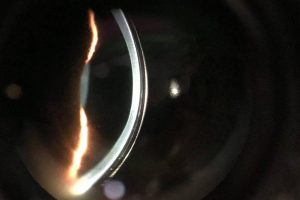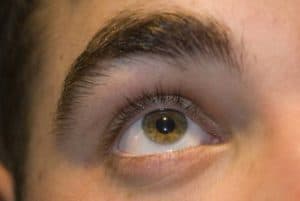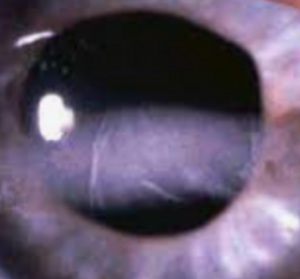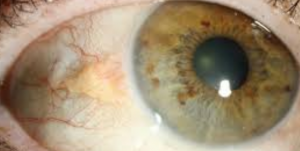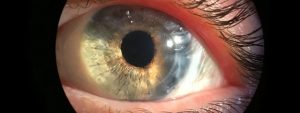Corneal abrasions account for over 2 in every 100 eye injuries each year.
What is the cornea?
The cornea is the clear, outermost layer of the eye that is responsible for bending light as it enters the eye, and protecting the eye from outside bacteria, viruses and germs. When the cornea suffers a scratch, this protective barrier is disrupted— placing you at an increased risk of serious corneal ulceration or infections.
Corneal scratches can range from minor to severe, and can sometimes lead to secondary problems such as a corneal ulcer or an inflammatory condition called iritis.
What is a corneal abrasion?
A corneal abrasion (or scratch) can occur from anything that comes in contact with the eye’s corneal surface — though many people are unable to determine what has caused it, as symptoms don’t always surface immediately.
The most common causes include:
- A foreign substance in the eye— sand, dirt, eyelash, etc.
- Poking the eye with a makeup brush, finger, paper, etc.
- Getting scratched in the eye by a baby or pet
- Chemicals in the eye
- Rubbing the eye vigorously
- Difficulties inserting or removing a contact lens
- Wearing damaged, dirty, or poor fitting contact lenses
- Eye injury while playing sports
- Moderate or severe dry eyes
Do I have a corneal abrasion?
If you think you may have scratched your cornea, contact your eye doctor as soon as possible.
A scratched cornea typically causes the following symptoms:
- Eye pain
- Tearing
- Red eyes
- Foreign body sensation
- Light sensitivity
- Blurry vision
- Difficulty keeping the eye open
Since the cornea is extremely sensitive, even a small scratch can cause a corneal ulcer and severe pain.
If you feel like something is stuck in your eye, try not to rub your eye— this can make the scratch worse. Instead, blink multiple times and pull your upper lid over your lower lid in an attempt to dislodge any foreign matter.
If this doesn’t work, flush your eye with a sterile saline or contact lens solution and contact your eye doctor.
Caution: Eye doctors recommend only using a sterile solution to flush foreign matter out of your eye, as regular water and even bottled water may contain certain microorganisms that can put your eye at risk of infection— especially when the eye contains an open wound.
How is a corneal abrasion diagnosed?
It is important to seek treatment for a corneal abrasion (even a minor one) to reduce your risk of developing a corneal ulcer.
To locate a corneal scratch, your eye doctor may numb your eye with an eye drop to keep it open during the examination.
Your doctor may also apply another type of eye drop that contains yellow dye, to highlight the scratch using a blue light and magnification.
If your eye is infected, your eye doctor may wish to swab your eye and send the culture to a lab to determine the most effective medication.
If you experience eye pain or blurry vision, contact an eye doctor near you, who can diagnose and treat the condition.
SEE RELATED: Corneal Ulcers
How is a corneal abrasion treated?
Your eye doctor may prescribe any of the following treatments, depending on the severity of the abrasion:
- Topical NSAIDs (eye drop of ointment) to reduce pain and inflammation
- Topical antibiotics (eye drop or ointment) to prevent an infection and corneal ulcer
- Non-preservative lubricating eye drops to keep your eye lubricated, hydrated and comfortable
- Oral pain reliever such as ibuprofen to alleviate discomfort
- Bandage contact lens to cover the abrasion— this can be used with prescription eye drops to provide pain relief and facilitate healing
With prompt treatment, a minor corneal abrasion should heal within a few days, without any permanent vision loss. A more severe abrasion will generally take about a week or two to heal.
If not treated properly, a corneal abrasion can lead to a corneal ulcer, which can threaten loss of vision.
While your eye is healing, give your eyes a rest from contact lenses— this will help your cornea to heal and reduce the risk of infection. Also, it is a good idea to keep a pair of sunglasses nearby for both outdoor and indoor use, to reduce light sensitivity.
Follow up with your eye doctor to ensure that your eye is healing properly and determine when you will be ready to resume normal activities.
Preventing corneal abrasions
Corneal abrasions are the most common eye injury in children.
However, most corneal scratches can be prevented by practicing the following eye health and safety guidelines:
- Never try to remove anything stuck in your eye.
- Always wear safety goggles when working in the yard, playing sports, and participating in any activities that require eye protection.
- Wear your contact lenses according to your eye doctor’s instructions— discard them in a timely manner, and practice contact lens hygiene.
- Treat your dry eye symptoms to ensure that your eyes remain hydrated and moist.
LEARN MORE: Guide to Corneal Conditions
If you are experiencing symptoms of a corneal abrasion, contact an eye doctor as soon as possible.
Even a minor scratch should be examined by a doctor to prevent infection and any other vision problems that can develop from an open wound.
Early treatment can facilitate optimal healing and help to reduce the risk of permanent and sight-threatening complications.

